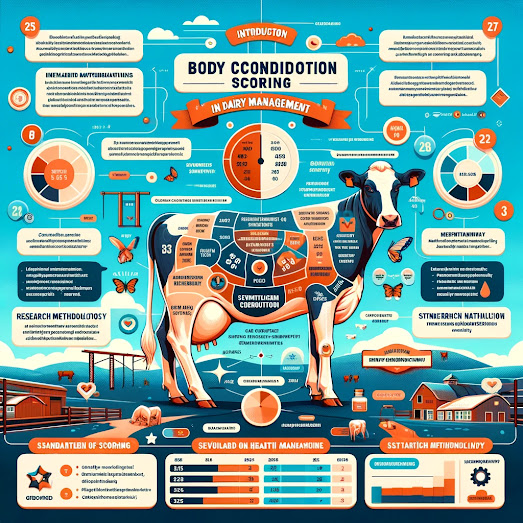Body Condition Scoring and Its Use in Management
Body condition scoring (BCS) is a critical quantitative methodology for assessing the fat reserves of an animal, playing a key role in managing nutritional status and overall health of livestock. This review focuses on the significance of BCS in dairy production, based on studies by Bc. Jefferies (1961), Edmonson et al., and Torres et al., which illuminate various aspects of BCS, from the development of scoring systems to its association with reproductive performance and diseases.
Development of Scoring Methodologies
Development of Scoring Systems (Jefferies, 1961; Edmonson et al.)
- BCS is applied using a standardized scoring system, based on palpation and visual assessment of specific anatomical landmarks.
- Edmonson and co-authors developed a specialized BCS chart for Holstein dairy cows, highlighting the importance of the pelvic and tailhead areas for accurate assessment.
Impact on Health Management and Productivity (Torres et al.)
- Analysis of the relationship between BCS, serum metabolites, and diseases indicates the value of BCS in predicting the risk of developing metritis, endometritis, ketosis, and mastitis.
Research Methodology
- Statistical Analysis and Consistency
- The study by Edmonson et al. included assessing the reliability of BCS through statistical analysis, demonstrating consistency in scoring results.
- Torres et al. found an association between serum metabolite levels, BCS, and diseases, underscoring the importance of monitoring these indicators.
Significance of Body Condition Scoring
- Impact on Health and Productivity
- Understanding the relationship between BCS, nutrition, and health allows for optimization of feeding strategies and increased productivity.
- Application in Practice
- Identifying appropriate interventions based on BCS can prevent diseases and maintain high productivity in dairy cows.
Conclusions
Studies affirm the importance of BCS as a tool for effective health and productivity management in dairy livestock. The development and standardization of body condition scoring methods, along with a deep understanding of the relationship between BCS, serum metabolites, and reproductive diseases, contribute to improving animal welfare and economic efficiency on farms.
Future Research Directions
- Analysis of BCS impact on reproductive indicators.
- Development of automated BCS assessment systems.
- Exploration of cross-cultural variations in BCS assessment methods.
Interested in learning more about academic resources? Looking OvcharenkoScienceBot




Comments
Post a Comment